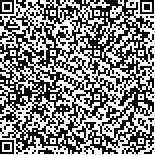| 摘要: |
| 研究表明褪黑素的含量下降可能与
阿尔茨海默病(AD)的发病以及其患者的睡
眠障碍有关。大量研究显示光照强度和光谱
能量分布等均可影响人体褪黑素的分泌,适
宜的光照可改善AD患者的睡眠障碍。此外,
AD患者这一特殊群体对建筑光环境的要求
也有特殊性:如日光的最大化利用;对于人工
光而言,则要求使用较高的照度水平、尽可能
消除眩光、避免光照水平的突然变化及不同
亮度区域间提供适当的过渡照明等。合理的
建筑光环境设计可改善AD患者的生活质量,
减少其异常行为,改善其睡眠障碍。研究光
照对阿尔茨海默病的影响将对阿尔茨海默病
的预防和治疗,甚至对AD患者的日常管理起
到积极的作用。论文对AD患者褪黑素水平与
睡眠障碍的关系、人工光照强度与光谱分布
对患者褪黑素分泌水平的影响、人工光照对
AD病症的辅助治疗方案等相关研究的进展
进行了介绍。 |
| 关键词: 阿尔茨海默病(A D) 褪黑素
(MT) 睡眠障碍 光照强度 光谱 建筑光
环境 |
| DOI:10.13791/j.cnki.hsfwest.20150601 |
| 分类号: |
| 基金项目:国家自然科学基金面上项目(51178483;
51378518) |
|
| Research Progress of Light Effects on Alzheimer Disease |
|
YAN Yonghong,LUO Yujie
|
| Abstract: |
| Previous studies have suggested the melatonin levels may be associated with the
incidence of Alzheimer Disease (AD) and the sleep disorder of the patients. A large number
of studies have indicated that illumination intensity and spectral energy distribution can
affect the secretion of melatonin in human body, and appropriate light can improve the sleep
quality of the AD patients. Besides, AD patients also have special requirements for building
the light environment. For example, the daylight should be used as much as possible; for
the artificial light, there should be a higher level of illumination and the glare and sudden
changes of illumination levels should be avoided. So the appropriate transition lighting
between the areas of different brightness should be provided. Reasonable design of building
light environment can improve the quality of AD patients’ lives, reduce their abnormal
behavior and improve their sleep quality. Therefore, studies of the light effects on AD will
play a positive role on the prevention and treatment of AD. And this paper will introduce
the research progress on the relationship between melatonin levels and sleep disturbance of
AD patients, the effects of artificial light intensity and spectral distribution on the secretion
of melatonin of patients, and the adjuvant therapy to AD by using the artificial light. |
| Key words: Alzheimer Disease Melatonin Sleep Disorder Illumination Intensity Spectrum Building Light Environment |


